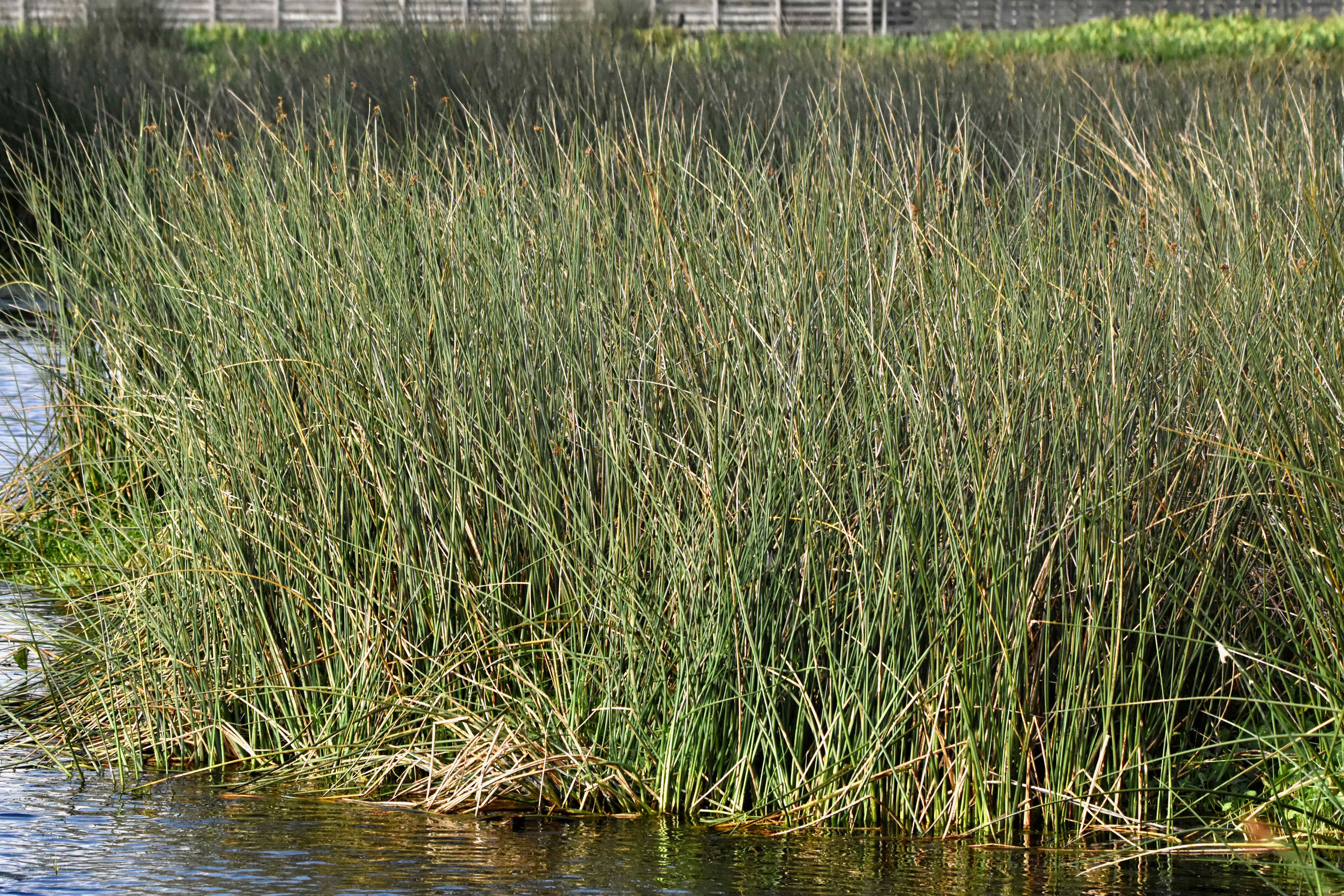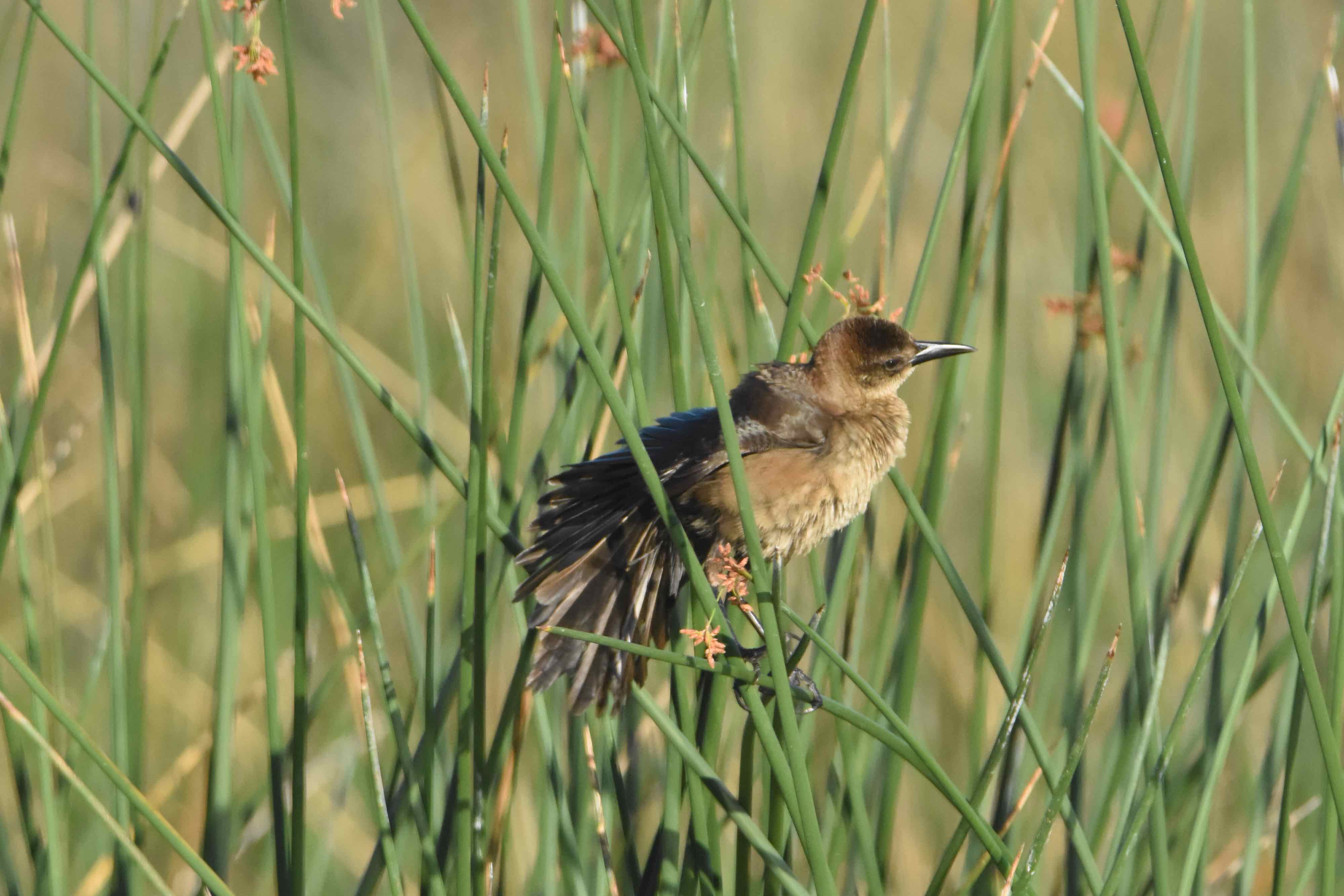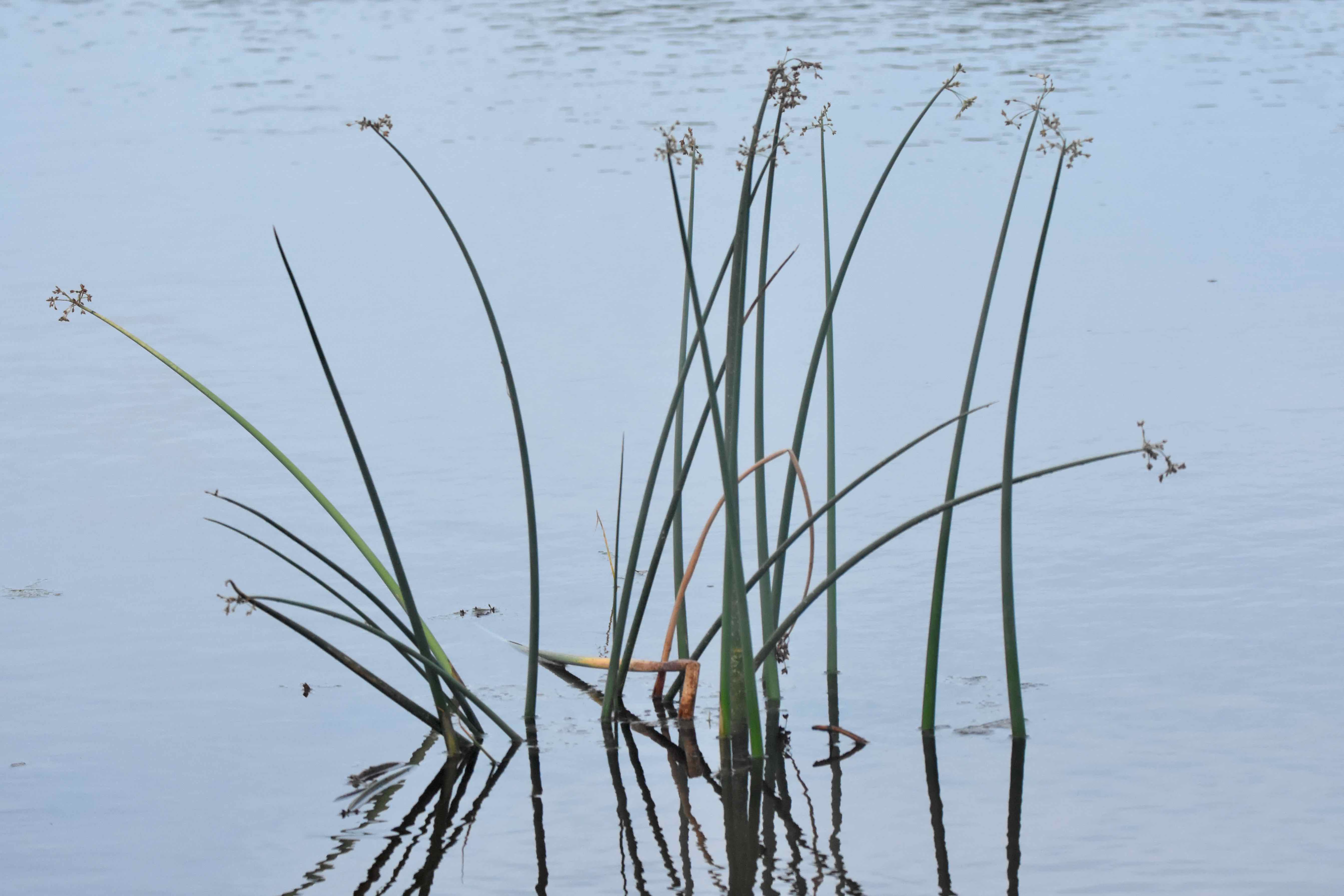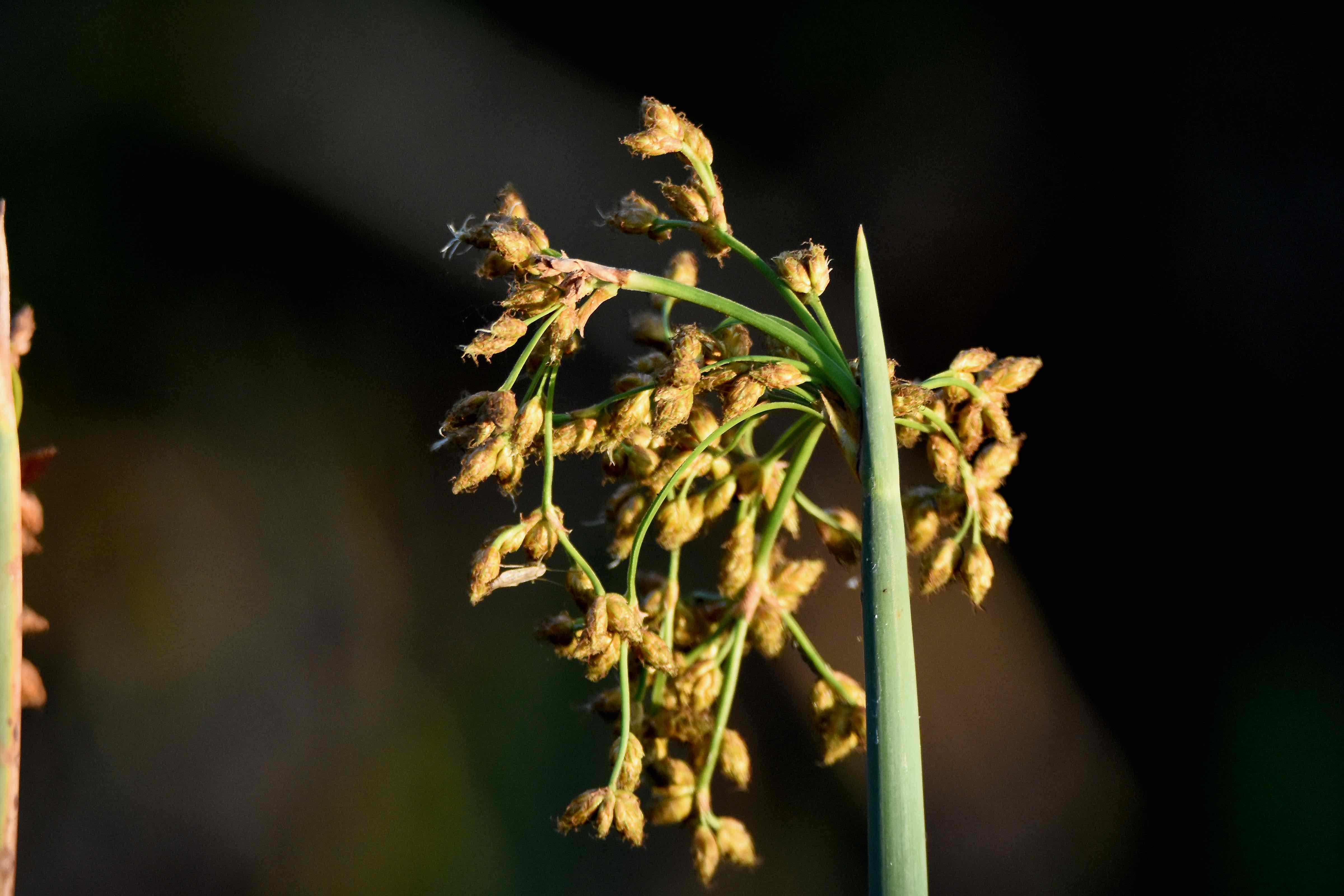
Giant bulrush, photographed at Green Cay Nature Center, Boynton Beach, Palm Beach County, in May 2017
Look at the vast expanses of giant bulrush at places like Green Cay or Wakodahatchee Wetlands and it's hard to imagine the rarity of this plant in South Florida. But it is indeed rare here. Very rare.
Where it does grow, giant bulrush grows by the thousands, literally, the photograph at the top testifying to that fact. The problem is it just doesn't grow in very many places.
Scientifcally known as Schoenoplectus californicus, giant bulrush is a Florida native that's found scattered throughout the state, but more so in the central Peninsula. Maps include Martin and Palm Beach County as part of its natural range — specimens were collected in both counties in the vicinity of Lake Okeechobee in the 1950s and '60s, but not since. In fact, the Institute for Regional Conservation considers giant bulrush extirpated, or locally extinct, within Martin and Palm Beach. The IRC lists giant bulrush as critically imperiled within South Florida, found only within the Big Cypress Preserve.
Now, the plant is abundant at Green Cay and Wakodahatchee, two wetlands within a mile or so of each other in South Palm Beach County, but both sites are man-made and the giant bulrush found there were most certainly planted at some point. Beyond our boundaries, giant bulrush is plentiful, and extraordinarily useful. It's found throughout the southern tier of the United States from Florida to California, and up the coast to Washington. It's also found in the Caribbean, Mexico, Central America and South America.
It certainly is a giant, reaching 10 feet or more into the air; its leaves are sheaths wrapped around the stem. At the top, a tassle-like flower spike emerges. It is an aquatic plant — emergent, as scientists say — that can grow in water as deep as three feet. It spreads via rhizomes, or underground stems, and can dominate an area.
As you might guess, it provides great cover for a variety of wildlife, particularly birds. Grackles, red-winged blackbirds, bitterns and green herons are often seen at Green Cay taking refuge within its masses. The seeds are the food of choice for a large selection ducks, including teals and scaups, rails, and more. Geese and other birds dine on the shoots and roots.
Giant bulrush stabilizes banks and provides erosion control in places where land and water meet. The density of the growth can knock down wave action from open water, further protecting the land. Giant bulrush is sold commercially, both plants and seeds.
Beyond the landscape, giant bulrush might have more uses than the Swiss army knife of plants, the cattail. It's said to taste better than cattails. The young shoots can been eaten raw or cooked. The pollen can be used as flour. The seeds can be used as flour. The rhizomes can be dried and used as flour. The rhizomes can be eaten raw or cooked. They've also been used as a decorative element in baskets. The plant itself has been used with willow poles to make houses, matting, bedding, diapers and menstrual pads, clothing, duck decoys, canoes and mud shoes. Yes, mud shoes.
Other common names include California bulrush, bulwhip, giant rush, tule and black root. An alternate scientific name: Scirpus californicus. It is a member of Cyperaceae, the sedge family.
Click on photo for larger image
Links for Giant Bulrush



